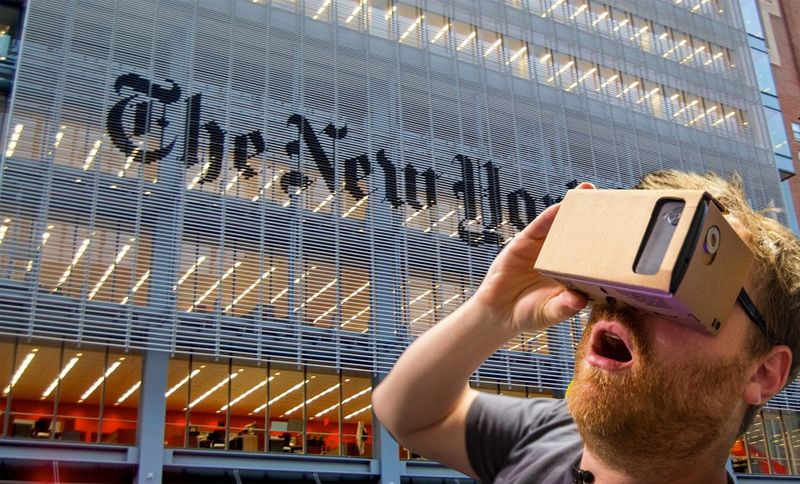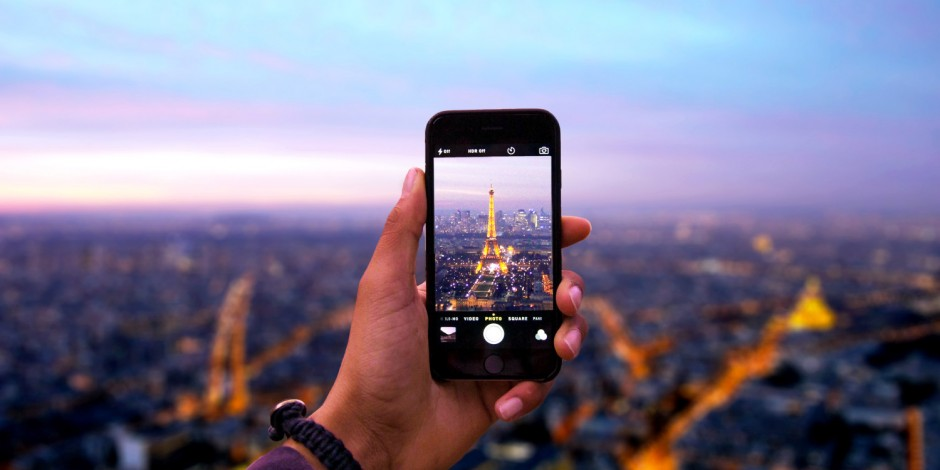Immersive Journalism: How VR is Shaping Journalistic Storyliving
Angela Hassassian
Jan 16, 2018 - 7 min read

VR is taking journalism by storm and has been for the past few years. We are entering a new era for sharing news, in a format that Virtual Reality pioneers would call, Immersive Journalism. Slowly breaking away from the video and text-based journalism that we are used to, the use of advanced technology is enriching journalistic opportunities, changing the way stories are being told and consumed. Story-writers are becoming more like UX designers, structuring an experience around the audience. Audiences are starting to experience storyliving instead of simply reading or watching material.
The creative process involved in developing these stories has definitely evolved, and journalists are still experimenting and testing different methods for connecting to their audiences in meaningful and memorable ways, using this new platform. A journalist’s mission is to transport their audiences to an event that happened very far away, in order to create some kind of understanding of what happened there and why. It’s not surprising that emotions are often involved in this process. With the new medium of Virtual Reality, everything contributes to the overall experience.
VR and Becoming a Witness
Raw sights and sounds, completely unedited and imperfect, help to create something as close as you can get to actual reality. That is why VR is able to leave such an emotional impact, that goes far beyond just conveying pieces of information. As technology improves, of course, so will the immersive experience, making it all the more realistic. "Already, virtual reality headsets and vivid soundtracks can put a viewer into stunning, 360-degree scenes of a bombed-out town in Syria. They can drop him onto a dark street in Sanford, Florida, as George Zimmerman surveils Trayvon Martin,” said Tom Kent, AP standards editor and Columbia University journalism professor.
Empathy is a term that often crops up when talking about Immersive Journalism. VR and Storytelling is a combination that promises to incite better understanding, emotions and empathy from the user. They say that it’s an impossible sensation to describe, and is simply something you need to experience for yourself in order to understand. The closest comparison is relative to other forms of content consumption. Picture yourself at a movie theater watching a horror. On one hand you are completely aware of being safe, yet on the other hand, you feel like you are there, in the scene with the main character, and you want to scream for them to turn around. Virtual Reality has that same ability to transport you someplace but at an even higher and deeper level. VR can truly trick your mind into feeling present at the scene.
Nonny de la Peña’s Immersive Journalism
There have been many examples of developments at the crossroads of Virtual Reality and Journalism over the past few years. I’ll touch base on some of the most notable ones. Nonny de la Peña is known as the “Godmother of Virtual Reality.” She is the leader of many projects dealing with Immersive Journalism, which allow you to walk through 3D generated recreations of actual events. She believes that VR Storytelling is a powerful and distraction-free technique that makes the audience become an actual witness to an event.
Her first project was Project Syria, which tells the story of the bombing of Aleppo, Syria, followed by an inside look at a Syrian refugee camp. While walking around this environment, you are no longer an outsider but are engaged as a witness, which can really build an emotional connection to the events which are unfolding before you. This builds a deeper bond between yourself and the story, as your mind tricks you into feeling like you were there, experiencing it all first hand.
As most of you know, when speaking of journalism and VR we are mostly referring to 360 videos rather than fully immersive VR (which is what La Peña’s projects are). This means you can view these 360 videos in a browser on mobile devices with cardboards. While this still doesn’t give the fully immersive experience that you would get with more advanced technology, it certainly makes it far more accessible to the average consumer. Either way, journalists are quick to jump on the opportunity to experiment with new tools. Since it’s too soon to tell which genres will be more successful, content creators are happy to push the limits and explore what types of stories will work in VR.
The New York Times and the Daily 360
The New York Times is the classic example of being one of the first news providers to have jumped on the opportunity to experiment with technology. They decided to send 1.2 million Google Cardboard units to subscribers via snail mail. This way, readers could download the NYTVR app, and using their smartphones with the provided cardboard, watch a number of different videos, including a heart-wrenching documentary called The Displaced, about Oleg and two other children who were forced to leave their homes because of a war. They now have hundreds of 360 cameras spread across their bureaux around the world, with hundreds of reporters being trained on how to use them. Currently, they have their own 360 video channel called the Daily 360 where they churn out 360 video stories, you guessed it, every day!
Having recognized the potential for covering stories in 360, they have built a library which has an enormous range of content. It includes everything from well-developed documentaries, to short features, hard-hitting news including foreign reports in war zones to live coverage of high traffic events such as the US Presidential inauguration of 2017. News outlets are motivated to be associated as one of the first to innovate in this new storytelling medium, as well as get involved in the development process. They are working to find the best business models because this will become the news medium in the near future.
Virtual Reality and Augmented Reality with RYOT
Another example which demonstrates just how powerful Immersive Journalism can be, is RYOT, a news organization which is founded on the idea that every short story they run should end with a defined call for action, including donating money or signing a petition. Their first VR piece told the story of a man who had been wrongly convicted of a crime and placed in solitary confinement for a year. They placed a virtual reality camera in the middle of a solitary confinement cell and allowed the man to narrate his story.
"He's narrating this experience, you're in a headset, you're looking around and he goes, 'In 15 seconds, you're going to be able to take off this headset and return to a normal life, but that's not the case for 80,000 Americans who are in solitary confinement today,’" said RYOT COO Molly Swenson. "Everyone has this moment of being like 'Oh, my God, what if I couldn't take off this headset and this is my reality?’” She then went on to say that everyone who tried the experience signed a petition from the ACLU to stop the practice. "This is basically a 100% conversion rate on a piece of content that we have," she said.
Storytelling Reinvented with VR and AR
Even in our own interface, we are experimenting with the different methods of storytelling using VR and AR. Imagine walking down the streets of Amsterdam and coming across a place which has a story tied to it. Using our AR technology, you would be able to learn more about that exact event which took place at that exact spot. In this case, you’d learn more about the unique celebrations tied to the King’s Day on April 27.
Thanks to VR and AR, we are no longer going to be passive consumers, we are going to be active participants in the stories that we join. Strict traditional narratives no longer hold a place in this format, because the key is the experience, not just the story. The participant is also given freedom, and the opportunity to observe the information given from different perspectives. Complicated issues will become something that we will be able to grasp on a different level. What’s more, is the impact it will have on our memories is something that we haven’t experienced as of yet. The technology has come so far that it’s only a matter of time that we are going to see VR/AR everywhere. We will begin to see VR reach us through already familiar platforms of Playstation, Facebook and Steam as well as news agencies from all over the world. Hold on, because a new wave of technology will be hitting us soon.


